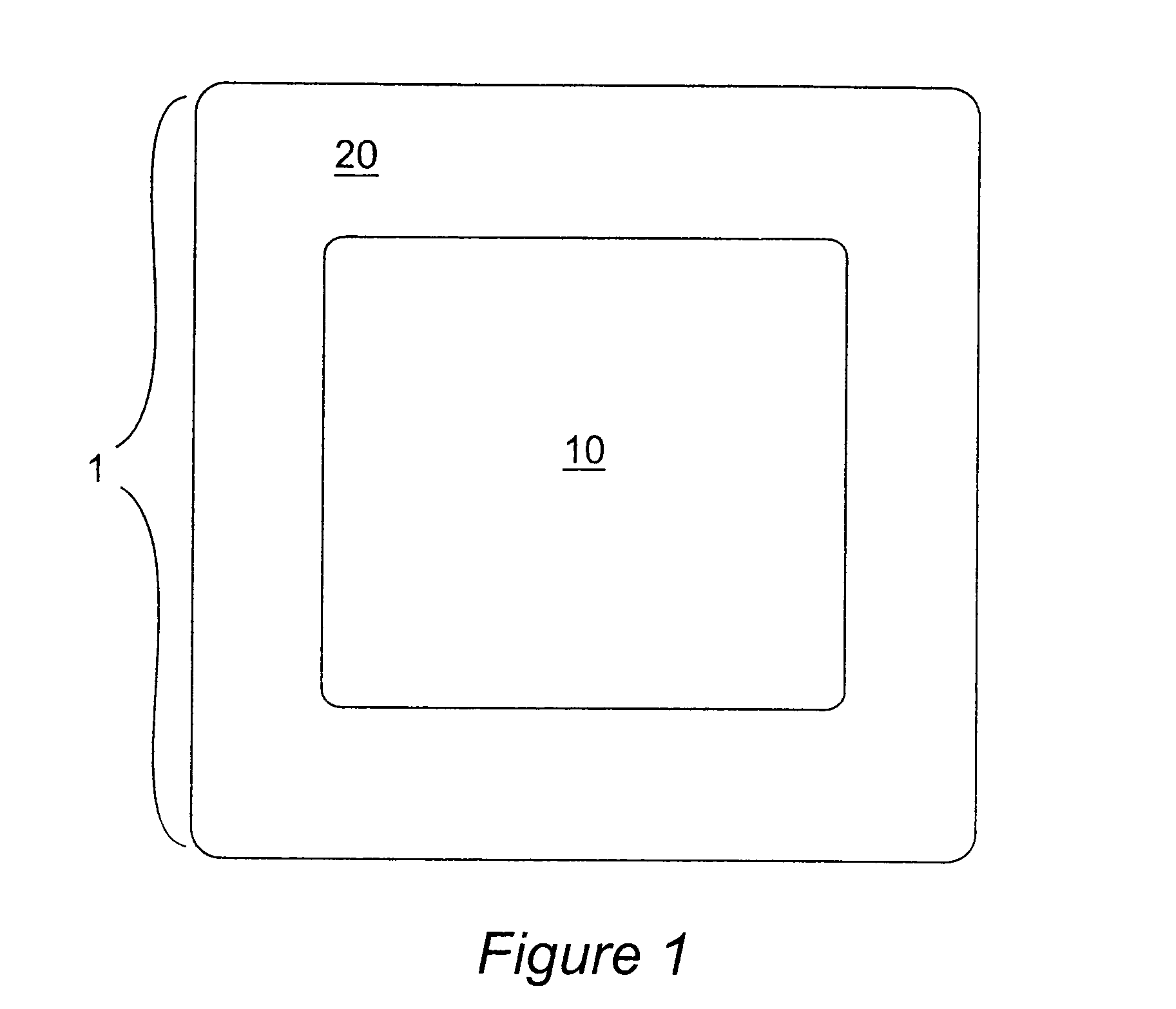Particles with improved solubilization capacity
a technology of solubilization capacity and particles, applied in the field of structured materials and particles, can solve the problems of difficult pill administration that achieves only a very limited bioavailability, and the difficulty of solubilization of such compounds, so as to reduce the chance of precipitation of actives and high active loading
- Summary
- Abstract
- Description
- Claims
- Application Information
AI Technical Summary
Benefits of technology
Problems solved by technology
Method used
Image
Examples
example 1
[0330]Essential oil of sweet basil, in the amount of 0.827 grams, was mixed with 0.765 gm. of the water-insoluble surfactant Tween 85 (available from Aldrich), 0.395 gm. of alpha-tocopherol, and 0.955 gm. water, and the mixture centrifuged for 16 hours in a table-top centrifuge (on the order of 3,000 G). At that time a basil oil-rich top phase had separated out which was decanted. A Tween-rich middle layer containing a reversed-type liquid crystalline phase was present as well as a bottom aqueous phase. About 4 ml. of water was added to the middle and bottom layers and this mixture sonicated using a DENEX ultrasonic cleaner, forming a crude dispersion. Estradiol (available from Sigma), in the amount of 15 mg., was dissolved in 0.594 gm. of the basil oil-rich top phase, and the following were overlaid on this solution: 2.463 gm. of the crude dispersion, 2.452 gm. of water, 18 mg. of sodium taurocholate (available from Aldrich)and 28 mg. of Pluronic F-68 (available from BASF). The mix...
example 2
[0331]Essential oil of peppermint, in the amount of 0.748 grams, was mixed with 0.625 gm. of the surfactant BRIJ 76 (main component: decaethylene glycol octadecyl ether) (available from Aldrich), 0.244 gm. of alpha-tocopherol, and 0.679 gm. water. The mixture centrifuged for 16 hours in a table-top centrifuge (on the order of 3,000 G) at which time a peppermint oil-rich top phase had separated out which was decanted. A BRIJ-rich middle layer containing a reversed-type cubic phase liquid crystal was present, containing excess water. About 4 ml. of water was added to the BRIJ-rich layer and this mixture sonicated, forming a crude dispersion. Paclitaxel, in the amount of 6 mg. was dissolved in 0.147 gm of the peppermint oil-rich top phase, and the following were overlaid on this solution: 0.479 gm. of the crude dispersion, 0.352 gm. of water, 4 mg. of sodium taurocholate and 5 mg. of Pluronic F-68 (available from BASF). The mixture was then sonicated as above in Example 1, yielding mic...
example 3
[0332]A crude dispersion of similar composition to that of Example 1 was prepared as follows. Essential oil of sweet basil, in the amount of 1.644 grams, was mixed with 1.529 gm. of Tween 85 (available from Aldrich), 0.798 gm. of alpha-tocopherol, and 1.941 gm. water, and the mixture centrifuged for 16 hours in a table-top centrifuge (on the order of 3,000 G). A basil oil-rich top phase had separated out which was decanted. A Tween-rich middle layer containing a reversed-type liquid crystal was present as well as a bottom aqueous phase. Water, 5.05 gm., 0.074 gm. of sodium taurocholate, and 0.044 gm. of Pluronic F-68, were added to the middle and bottom layers and this mixture sonicated, forming a crude dispersion. Manadione (Vitamin K2) (available from Sigma), in the amount of 40 mg. was dissolved in 0.372 gm. of the basil oil-rich top phase, and the following were overlaid on this solution: 2.062 gm. of the crude dispersion, and 1.101 gm. of water. The mixture was then sonicated, ...
PUM
| Property | Measurement | Unit |
|---|---|---|
| diameter | aaaaa | aaaaa |
| sizes | aaaaa | aaaaa |
| mean caliper diameter | aaaaa | aaaaa |
Abstract
Description
Claims
Application Information
 Login to View More
Login to View More - R&D
- Intellectual Property
- Life Sciences
- Materials
- Tech Scout
- Unparalleled Data Quality
- Higher Quality Content
- 60% Fewer Hallucinations
Browse by: Latest US Patents, China's latest patents, Technical Efficacy Thesaurus, Application Domain, Technology Topic, Popular Technical Reports.
© 2025 PatSnap. All rights reserved.Legal|Privacy policy|Modern Slavery Act Transparency Statement|Sitemap|About US| Contact US: help@patsnap.com

